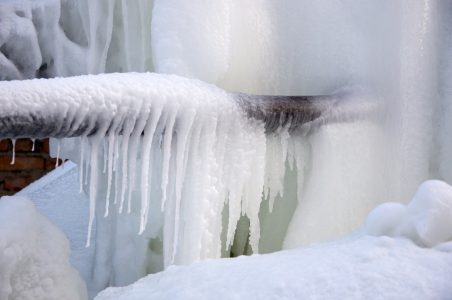How do you really feel in regards to Preventing and dealing with frozen pipes?

Winter can damage your plumbing, specifically by freezing pipes. Below's exactly how to prevent it from happening and what to do if it does.
Intro
As temperature levels decline, the threat of frozen pipelines increases, possibly leading to pricey repairs and water damage. Comprehending exactly how to avoid icy pipelines is important for house owners in cool environments.
Avoidance Tips
Protecting prone pipelines
Wrap pipes in insulation sleeves or utilize heat tape to safeguard them from freezing temperatures. Concentrate on pipelines in unheated or external locations of the home.
Home heating strategies
Maintain indoor rooms properly heated up, particularly areas with pipes. Open closet doors to allow warm air to circulate around pipes under sinks.
How to recognize icy pipelines
Try to find reduced water flow from faucets, uncommon smells or noises from pipes, and noticeable frost on revealed pipes.
Long-Term Solutions
Structural adjustments
Take into consideration rerouting pipelines away from outside wall surfaces or unheated areas. Include additional insulation to attics, cellars, and crawl spaces.
Upgrading insulation
Invest in high-grade insulation for pipes, attics, and wall surfaces. Appropriate insulation helps preserve consistent temperature levels and reduces the danger of frozen pipelines.
Protecting Outside Pipes
Garden tubes and outside taps
Disconnect and drain yard hoses before winter months. Install frost-proof faucets or cover exterior faucets with protected caps.
Recognizing Frozen Pipes
What triggers pipelines to ice up?
Pipes freeze when subjected to temperature levels listed below 32 ° F (0 ° C) for expanded durations. As water inside the pipes freezes, it broadens, taxing the pipeline wall surfaces and possibly creating them to break.
Threats and damages
Frozen pipelines can bring about supply of water interruptions, property damage, and expensive repair work. Burst pipelines can flooding homes and trigger substantial structural damage.
Indications of Frozen Pipeline
Identifying icy pipelines early can stop them from rupturing.
What to Do If Your Pipes Freeze
Immediate actions to take
If you believe frozen pipes, maintain faucets open up to eliminate pressure as the ice thaws. Utilize a hairdryer or towels soaked in hot water to thaw pipelines slowly.
Verdict
Avoiding icy pipes calls for positive actions and quick feedbacks. By comprehending the reasons, indications, and safety nets, property owners can shield their plumbing throughout winter.
5 Ways to Prevent Frozen Pipes
Drain Outdoor Faucets and Disconnect Hoses
First, close the shut-off valve that controls the flow of water in the pipe to your outdoor faucet. Then, head outside to disconnect and drain your hose and open the outdoor faucet to allow the water to completely drain out of the line. Turn off the faucet when done. Finally, head back to the shut-off valve and drain the remaining water inside the pipe into a bucket or container. Additionally, if you have a home irrigation system, you should consider hiring an expert to clear the system of water each year.
Insulate Pipes
One of the best and most cost-effective methods for preventing frozen water pipes is to wrap your pipes with insulation. This is especially important for areas in your home that aren’t exposed to heat, such as an attic. We suggest using foam sleeves, which can typically be found at your local hardware store.
Keep Heat Running at 65
Your pipes are located inside your walls, and the temperature there is much colder than the rest of the house. To prevent your pipes from freezing, The Insurance Information Institute suggests that you keep your home heated to at least 65 degrees, even when traveling. You may want to invest in smart devices that can keep an eye on the temperature in your home while you’re away.
Leave Water Dripping
Moving water — even a small trickle — can prevent ice from forming inside your pipes. When freezing temps are imminent, start a drip of water from all faucets that serve exposed pipes. Leaving a few faucets running will also help relieve pressure inside the pipes and help prevent a rupture if the water inside freezes.
Open Cupboard Doors
Warm your kitchen and bathroom pipes by opening cupboards and vanities. You should also leave your interior doors ajar to help warm air circulate evenly throughout your home.

I found that post about How To Avoid Freezing Pipes when doing a search on the search engines. Do you know somebody else who is involved in the subject? Please feel free to promote it. We appreciate reading our article about Helpful Tips to Prevent Frozen Pipes this Winter.
Click Here